Articles
- Page Path
- HOME > Korean J Community Nutr > Volume 29(2); 2024 > Article
- Research Article
- Impact of postoperative dietary types on nutrition and treatment prognosis in hospitalized patients undergoing oral and maxillofacial surgery: a comparative study
- Sung Bin Youn, Se-Hui Ahn, Dong-Ho Cho, Hoon Myoung
-
Korean Journal of Community Nutrition 2024;29(2):129-143.
DOI: https://doi.org/10.5720/kjcn.2024.29.2.129
Published online: April 30, 2024

2Master Student, Department of Oral and Maxillofacial Surgery, Dental Research Institute, School of Dentistry, Seoul National University, Seoul, Korea

3Professor, Department of Oral and Maxillofacial Surgery, Dental Research Institute, School of Dentistry, Seoul National University, Seoul, Korea

-
Corresponding author:
Hoon Myoung, Tel: +82-2-6256-3131, Fax: +82-2-6256-3098,
Email: myoungh@snu.ac.kr
- 1,922 Views
- 70 Download
- 3 Crossref
- 0 Scopus
Abstract
Objectives
The objective of this study is to compare a nutritionally balanced soft blend diet (SBD) with a soft fluid diet (SFD) on the health of inpatients who have undergone oral and maxillofacial (OMF) surgery, ultimately aiming to enhance care outcomes, improve healthrelated quality of life (QOL), and increase satisfaction with the hospital.
Methods
Thirty-two patients were randomized into two groups: sixteen received SFD and sixteen received SBD. Anthropometric, laboratory evaluations were conducted upon admission and discharge. Patients filled out questionnaires on demographics, diet satisfaction, food intake amount, and health-related QOL on the day of discharge, assessed using the EuroQoL 5 Dimensions 3 Level and EuroQoL Visual Analogue Scale (EQ-VAS) instruments. Data were analyzed with descriptive statistics, χ 2 tests for group differences, and paired nonparametric t-tests for within-group comparisons. The Mann-Whitney U test evaluated inter-group differences in preoperative weight and body mass index (BMI), postoperative changes, meal satisfaction, intake, health-related QOL, and self-assessed health status. P-values were set at a significance level of 0.05.
Results
The SBD group had higher dietary intake (63.2% vs. 51.0%) and greater diet satisfaction (80.6 vs. 48.1, P < 0.0001) compared to SFD group. Health-related QOL, measured by EQ-VAS, was better in SBD group (70.3 vs. 58.8, P < 0.05). Postoperative weight and BMI decreased in SFD group but increased in SBD group (P < 0.01). Changes in laboratory results showed more stability in the SBD group. No postoperative infections were reported in SBD group, whereas SFD group had a 31.25% complication rate.
Conclusions
While SFD is often recommended after OMF surgery to protect oral wound healing process, our study reveals that SBD not only enhances physical and psychological outcomes but also, somewhat unexpectedly, supports wound healing and reduces complications. Essentially, SBD promotes physical recovery and enhances health-related QOL than SFD by supporting both somatic and mental healing aspects.
Published online Apr 23, 2024.
https://doi.org/10.5720/kjcn.2024.29.2.129
Impact of postoperative dietary types on nutrition and treatment prognosis in hospitalized patients undergoing oral and maxillofacial surgery: a comparative study
Abstract
Objectives
The objective of this study is to compare a nutritionally balanced soft blend diet (SBD) with a soft fluid diet (SFD) on the health of inpatients who have undergone oral and maxillofacial (OMF) surgery, ultimately aiming to enhance care outcomes, improve health-related quality of life (QOL), and increase satisfaction with the hospital.
Methods
Thirty-two patients were randomized into two groups: sixteen received SFD and sixteen received SBD. Anthropometric, laboratory evaluations were conducted upon admission and discharge. Patients filled out questionnaires on demographics, diet satisfaction, food intake amount, and health-related QOL on the day of discharge, assessed using the EuroQoL 5 Dimensions 3 Level and EuroQoL Visual Analogue Scale (EQ-VAS) instruments. Data were analyzed with descriptive statistics, χ2 tests for group differences, and paired nonparametric t-tests for within-group comparisons. The Mann-Whitney U test evaluated inter-group differences in preoperative weight and body mass index (BMI), postoperative changes, meal satisfaction, intake, health-related QOL, and self-assessed health status. P-values were set at a significance level of 0.05.
Results
The SBD group had higher dietary intake (63.2% vs. 51.0%) and greater diet satisfaction (80.6 vs. 48.1, P < 0.0001) compared to SFD group. Health-related QOL, measured by EQ-VAS, was better in SBD group (70.3 vs. 58.8, P < 0.05). Postoperative weight and BMI decreased in SFD group but increased in SBD group (P < 0.01). Changes in laboratory results showed more stability in the SBD group. No postoperative infections were reported in SBD group, whereas SFD group had a 31.25% complication rate.
Conclusions
While SFD is often recommended after OMF surgery to protect oral wound healing process, our study reveals that SBD not only enhances physical and psychological outcomes but also, somewhat unexpectedly, supports wound healing and reduces complications. Essentially, SBD promotes physical recovery and enhances health-related QOL than SFD by supporting both somatic and mental healing aspects.
INTRODUCTION
Oral and maxillofacial (OMF) surgery encompasses a range of surgical operations performed on the head and neck region. Surgical site wounds often disrupt the process of providing nourishment through enteral feeding, leading to malnutrition and impeding recovery from the postoperative catabolic state. The adverse effects of severe malnutrition include complications after surgery, increased susceptibility to infections, longer hospital stays, and nosocomial infections [1, 2]. Furthermore, since most patients spend over a day in the hospital following OMF surgery, there is a growing demand for receiving appropriate in-hospital services and the improvement of health-related quality of life (QOL) despite the relatively brief duration of stay [3, 4]. Thus, it is important to provide nutritionally sufficient and satisfying meals to patients after surgery. This approach not only facilitates a prompt recovery process but also contributes to their contentment with hospital services and overall health-related QOL [2]. However, it is common practice in most South Korean dental hospitals to provide patients with a predetermined postoperative diet, specifically a clear liquid diet, without any specific criteria being defined.
An OMF surgeon performs a range of surgical procedures. Major surgeries include the management of trauma, treatment of dentofacial deformities, orthognathic surgery, and oral cancer surgery. Minor surgeries encompass the surgical extraction of third molars, cyst removal, excision of benign tumors, treatment of jawbone infections, dental implant placements, and alveolar bone grafting. Typically, for complex surgeries like orthognathic or oral cancer surgery, a soft fluid diet (SFD) is recommended initially, which is then transitioned to a soft blend diet (SBD) until the wound heals and the patient can comfortably move their jaw again. However, minor surgical procedures are less likely to result in dramatic alterations to the oral environment, and the duration of hospitalization is often short [5, 6]. Nevertheless, an SFD is consistently administered even after most of the minor procedures. Such uniform treatment is usually implemented without a precise nutritional assessment. Despite the lack of empirical evidence, the practice of initially administering an SFD to inpatients has been standardized.
Unlike patients undergoing surgery in other areas of the body, individuals undergoing OMF surgeries should be assessed using newly defined post-operative nutritional and satisfaction criteria [7, 8]. Enhanced Recovery After Surgery (ERAS) is a comprehensive and patient-focused approach aimed at reducing surgical stress and accelerating the process of postoperative recovery [9]. ERAS protocols are effective in various surgical fields and lead to shorter hospital stays, faster recoveries, and fewer post-discharge complications. Focusing on 3 key phases—preadmission optimization, intraoperative treatment, and postoperative management—OMF surgeons have traditionally focused on meticulous surgical techniques and minimizing trauma during the operative phases [10]. However, there is a noticeable absence of research on the critical last stage, which is postoperative treatment. In addition, even the limited studies available have primarily examined the impact of the quantity of diet on surgical outcomes, leaving the exploration of diet types during postoperative care significantly unaddressed [11]. Furthermore, a challenge arises because the oral environment after surgery typically presents as a clean-contaminated wound, which is fragile to bacterial proliferation [12]. Consequently, this increases the likelihood of infections compared to other surgical sites [13]. Following OMF surgery, patients may experience swelling and diminished sensation, potentially impeding their ability to sense food in their mouths and leading to decreased appetite. Decreased food intake may also result from longer surgical durations and the dissection of the masticatory muscles, which can lead to restricted mouth opening or impede normal jaw function and occlusion. These factors contribute to the complexity of post-operative dietary care for OMF patients. Therefore, it is necessary to make modifications to the dietary treatment for maxillofacial patients.
Our study aims to investigate the nutritional status, and treatment prognosis by comparing a high-energy SBD against the conventional SFD in patients who have undergone OMF surgery. This research seeks to provide evidence-based recommendations for types of dietary choices after OMF surgery. The ultimate goal is to enhance treatment outcomes during hospitalization, improve health-related QOL, and elevate patient satisfaction with the hospital experience.
METHODS
Ethics statement
|
1. Study participants
This study focused on patients admitted to Seoul National University Dental Hospital who underwent OMF surgery. The surgical procedures included the extraction of third molars, removal of cysts and benign tumors, treatment of jawbone infections, dental implant placement, and alveolar bone grafting. Specifically, the study targeted individuals who were 20 years of age or older and met the American Society of Anesthesiologists classification 1 or 2. To ensure a consistent dataset and accurate comparisons, individuals with significant age differences or disparities in the number of maxillary and mandibular teeth were excluded from the analysis. After applying these criteria, a group of 32 patients was determined to be eligible for inclusion in the study. Subsequently, the participants were randomly allocated into 2 groups: one received an SFD (n = 16) and the other an SBD (n = 16). The total number of dental crowns, including prostheses such as implants and bridges, was calculated as the number of teeth. Before discharge, the length of patients’ hospital stay was recorded, and a personal questionnaire was given to the patients. The questionnaire utilized a self-recording method, where patients directly answered the questions. The answers were then inputted into the electronic dental record system at Seoul National University Dental Hospital. Subsequently, the OMF surgeon evaluated the patient’s nutritional status and subjective satisfaction, integrating anthropometric and laboratory findings with responses from the questionnaire. The research was conducted from May 2023 to October 2023.
2. Dietary composition of the provided diet (SFD, SBD)
The dietary regimens studied were the SFD and SBD, tailored for patients post-OMF surgery. The SFD regimen was calibrated to deliver an estimated 600–900 kcal daily, with the macronutrient distribution adhering to a ratio of 2:1:1 for carbohydrates, protein, and fat respectively. This yielded approximately 300 kcal from carbohydrates, with each of the other macronutrients contributing approximately 150 kcal. Conversely, the SBD was formulated to provide a more substantial caloric supply, with daily values ranging between 1,700 and 2,000 kcal. The SBD food exchange unit followed the following ratios: 10:4:5:4:3:3, for grains, fish, meat, vegetables, fats, milk, and fruits. The specific breakdown of meals for each diet was as follows: The SFD consisted of a meal consisting of 300 g of rice gruel and 150 cc of low-salt soup, providing a total of 57 kcal from carbohydrates 14.1 g and protein 1 g, with the soup contributing negligible calories. The water kimchi, which added 10 kcal without containing additional ingredients, was not sufficient in essential nutrients; however, it was provided to supplement the diet with necessary vitamins and minerals. The beverage Nucare© (Wellife, Seoul, Korea), included with breakfast, brought in an additional 200 kcal (carbohydrate 30 g, protein 7 g, fat 6 g), while soy milk for lunch and dinner contributed 130 kcal each (carbohydrate 15 g, protein 6 g, fat 5 g), resulting in a total of 267 kcal for breakfast and 197 kcal for subsequent meals.
The SBD’s meals began with a breakfast of 350 g of rice porridge at 250 kcal (carbohydrate 57.5 g, protein 5 g). The accompanying low-salt protein dish and 2 types of salt-free vegetable dishes provided 130 kcal (protein 21 g, fat 5 g) and a combined 106 kcal (carbohydrate 16.5 g, protein 11 g), respectively. A serving of water kimchi contributed 18 kcal (carbohydrate 3 g, protein 1.4 g), and milk added 125 kcal (carbohydrate 10 g, protein 6 g, fat 7 g). For lunch, a similar structure included rice porridge at 250 kcal, a low-salt soup, a protein dish, 2 vegetable dishes, and water kimchi, with fruit adding 50 kcal totaling 584 kcal. Dinner followed a comparable pattern, except for providing fruit, leading to a total of 534 kcal. Overall, the SFD offered a mean daily intake of 661 kcal, with 102.3 g of carbohydrates, 22 g of protein, and 16 g of fat. On the other hand, the SBD provided a notably greater amount of energy with an average of 1,747 kcal, comprising of 258 g of carbohydrates, 126.2 g of protein, and 24 g of fat (Figure 1, Table 1).
Fig. 1
(A, B) Soft fluid diet. (C, D) Soft blend diet.
Table 1
Dietary composition of the provided diet (SFD, SBD)
3. Assessment of dietary intake and postoperative appetite levels
The questionnaire is divided into 4 sections: patient demographic information, satisfaction with the post-surgery diet, assessment of food intake amount, and the extent of improvement in health-related QOL (Supplementary Figure 1). The assessment of food intake and postoperative appetite levels was conducted through several measures. Patients rated their satisfaction with the post-surgery diet on a scale of 100-point, considering factors such as taste, seasoning, smell, appearance, portion size, softness, temperature, and nutritional content. Post-surgical appetite was measured using a 5-point Likert scale. To estimate dietary intake proportions, patients self-assessed the amount of uneaten food remaining after each meal.
4. Health-related QOL
To evaluate improvements in health-related QOL, our study utilized 2 validated instruments: the EuroQoL 5 Dimensions 3 Level (EQ-5D-5L) [14] and the EuroQoL Visual Analogue Scale (EQ-VAS) [15]. The perceived subjective improvement in the patient’s health status following surgery was also measured using a 5-point Likert scale. The EQ-5D-5L assesses 5 dimensions: physical ability, self-management, usual activities, pain/discomfort, and anxiety/depression. Higher scores in each dimension indicate more significant challenges, such as decreased mobility, greater difficulty with self-management and usual activities, increased pain and discomfort, and higher levels of anxiety and depression. For the EQ-VAS, patients rate their overall health on a scale from 0, representing the ‘worst imaginable health state,’ to 100, the ‘best imaginable health state,’ using a visual analog scale to express their health status directly.
5. Anthropometric measurement
All patients were admitted to the hospital the day before surgery. During this preoperative period, physical data such as height and weight were collected. The weight and height were assessed with a portable stadiometer (Jenix, Seoul, Korea) to the nearest 0.1 cm. Upon admission, the body mass index (BMI) was calculated using height and weight (BMI = kg/m2). Likewise, the measurements of height and weight were taken once more before discharge, and BMI was recorded.
6. Laboratory test
Upon admission, baseline laboratory values, including a complete blood count, a coagulation panel, and a basic metabolic panel, are obtained preoperatively. These included hemoglobin (Hgb, g/dL); hematocrit (Hct, %); C-reactive protein (CRP, mg/dL); albumin level (g/dL); total lymphocyte count (TLC, cells/mm3); and absolute neutrophil count (ANC, cells/µL). Before discharge, the same blood tests were performed. Along with the basic parameters, specialized nutritional indicators to evaluate the nutritional status of hospitalized patients were calculated. Of particular note are the nutritional risk index (NRI) [16], and the prognostic nutritional index (PNI) [17]. The NRI was calculated using the formula: (1.519 × Albumin in g/L) + (41.7 × Postoperative Weight/Preoperative Weight). A score above 100 on the NRI indicates that there is no nutritional danger and suggests that the patient’s nutritional state is adequate for recovery. Values ranging from 97.5 to 100, 83.5 to 97.5, and below 83.5, correspondingly indicate mild, moderate, and severe nutritional risks. Meanwhile, PNI was determined by (10 × Serum Albumin in g/dL + 0.005 × TLC per mm3). A PNI score of 45 or higher indicates a minimal possibility of postoperative complications, indicating a positive surgical outcome. Scores ranging from 40 to less than 45 indicate a moderate risk of complications, while scores below 40 indicate a high risk of complications.
7. Clinical follow-up
An assessment was conducted 3 months after the surgery. We assessed both subjective and objective symptoms related to infectious conditions including cellulitis, abscess, and surgical site infection. At the same time, accompanying symptoms such as swelling, edema, redness, and pain were meticulously monitored and assessed.
8. Statistical analysis
This study's analysis was performed using GraphPad Prism software, version 10.0.2 (GraphPad Software Inc., San Diego, CA, USA). Descriptive statistics were utilized to describe the personal data of the participants, such as gender, age, and length of hospital stay. Chi-square tests were employed to assess differences between the groups. Pre- and postoperative data within the SFD and SBD groups were compared using paired nonparametric t-tests. Mann-Whitney U test was employed to assess differences between the SFD and SBD groups regarding preoperative weight and BMI, post-surgery changes in weight and BMI, meal satisfaction, food intake amounts, health-related QOL, and self-assessed health status. Figure 2 illustrates the flow of this study.
Fig. 2
The course of studies.
ASA, American Society of Anesthesiologists; SFD, soft fluid diet; SBD, soft blend diet; BMI, body mass index.
RESULTS
1. General characteristics
The SFD group had a male majority of 62.5%, while the SBD group had a male majority of 56.3%. The average age in the SFD group was 50.6 years, but it was slightly lower in the SBD group at 47.5 years, but it was not statistically significant. The predominant age range in both groups was above 60 years, accounting for 37.5% of the participants. Individuals in the SFD group experienced an average hospital stay of 3.1 days, whereas those in the SBD group had a marginally extended average stay of 4.2 days although this difference was not statistically significant. There was no significant difference in the number of maxillary teeth between both groups (Table 2).
Table 2
General characteristics of the participants
2. Characteristic of dietary intake
When evaluating characteristics of dietary intake, both groups exhibited comparable levels of appetite, with scores of 2.4 and 2.9, respectively (P < 0.05). The SFD group consumed only 51.0% of their total diet, whereas the SBD group had significantly higher average intake proportions of 63.2% (P < 0.05). The primary reasons cited by the SFD group for not taking food were ‘lack of appetite,’ ‘insufficient salt,’ and ‘dissatisfaction with taste.’ Conversely, the main factors cited by the SBD group were ‘dissatisfaction with taste,’ ‘lack of appetite,’ and ‘feeling of fullness.’ Regarding meal satisfaction, 56.3% of the SFD group stated that the only positive aspect of the meal was the softness of the rice. In contrast, the SBD group expressed satisfaction with a broader range of attributes, highlighting favorable aspects such as flavor, seasoning, and serving size. Upon assessing overall meal satisfaction on a 100-point scale, the SFD group achieved an average score of 48.1. In contrast, the SBD group scored substantially higher, with an average of 80.6, indicating greater overall satisfaction (P < 0.0001) (Figure 3A, Table 3).
Fig. 3
(A) Overall meal satisfaction. (B) EQ-VAS.
SFD, soft fluid diet; SBD, soft blend diet; EQ-VAS, EuroQoL Visual Analogue Scale.
Table 3
The characteristics of dietary intake
3. Health-related QOL assessment
Analysis of the EQ-5D-3L scores revealed that the SBD group demonstrated superior physical functioning and daily activities, along with reduced levels of anxiety and depression, compared to the SFD group (P < 0.05). Additionally, the EQ-VAS score, indicating self-assessed health status, was significantly higher in the SBD group at 70.3, vs. 58.8 in the SFD group (P < 0.05). This indicates that individuals in the SBD group rated their overall health condition more favorably than those in the SFD group (Figure 3B, Table 4).
Table 4
Health-related quality of life
4. Anthropometric measurement
Preoperative measurements of body weight and BMI indicated that the SFD group had an average weight of 61.8 kg with a BMI of 22.7, while the SBD group had an average weight of 63.7 kg with a BMI of 22.4. However, the Mann-Whitney U test revealed no significant differences between the groups (P < 0.05). The overall data for both groups showed only minor differences in body weight and BMI. However, when examining the change from pre- to post-surgery within each group, the SFD group experienced a statistically significant decrease in weight (−1.0 kg) and BMI (−0.3) following surgery (P < 0.01), while the SBD group exhibited gains in weight (0.6 kg) and BMI (0.2) (P < 0.01) (Table 5).
Table 5
Anthropometric measurement
5. Laboratory test
The assessment of pre- and postoperative changes within each SFD and SBD group was conducted using a paired nonparametric t-test. The postoperative data demonstrated a consistent reduction in albumin levels in both groups, with a statistically significant difference (P < 0.01). Furthermore, a reduction in TLC was observed when comparing the post and preoperative change in both groups. However, a more substantial decrease in TLC was noted in the SFD group (−1,513.8) compared to the SBD group (−815.6) (P < 0.05). While both groups had a reduction in Hgb and Hct levels following the surgery, this reduction did not reach statistical significance. Conversely, the prompt inflammatory reaction led to elevated ANC levels in both groups (P < 0.01). Both the SFD and SBD groups exhibited an increase in high-sensitivity CRP levels, however, only the SBD group demonstrated a statistically significant increase (P < 0.01). In addition, the nutritional indicators NRI and PNI exhibited a substantial decline in both the SFD and SBD groups (both P < 0.01). When comparing the amount of change between the SFD and SBD groups using the Mann-Whitney U test, the SBD group consistently exhibited smaller changes in measurements such as albumin, TLC, NRI, and PNI (Table 6).
Table 6
Laboratory test
6. Clinical follow-up result
Three months after surgery, an assessment was conducted on all participants. The 16 patients in the SBD group exhibited no signs of infection and experienced positive recoveries. Conversely, within the SFD group, 5 out of 16 patients faced recurrent discomfort and edema at the surgical site, necessitating an average of 2.4 additional visits to the outpatient clinic for extra dressings. These patients mainly reported experiencing lethargy, discomfort, and pain (Table 7).
Table 7
Clinical follow-up result
DISCUSSION
OMF surgery necessitates a thorough understanding of the patient's nutritional requirements. After OMF surgery, the oral cavity, which serves as the primary entrance of food, undergoes alterations. Moreover, intricate alterations in homeostasis occur following surgical intervention, often referred to as post-aggression syndrome. Following surgery, the baseline energy requirements increase by roughly 10% compared to preoperative levels [1]. A decline in a patient’s nutritional status during the perioperative period can adversely affect the wound healing process [18]. Several studies have examined the use of high-energy and high-protein nutritional supplements to enhance clinical and surgical outcomes during the postoperative period after oral surgery [6, 19]. There is a significant lack of research specifically addressing the postoperative management following OMF surgery. In addition, even the limited number of research available has primarily focused on how the amount of food consumed affects recovery while overlooking the examination of various dietary patterns throughout the postoperative phase. Previous studies have focused solely on the quantitative aspect; however, attention must also be directed toward the qualitative dimension, specifically regarding what types of food should be provided. It’s important to note that patients may find psychological comfort in the sensation of recovery associated with taking the SBD. This is because the SBD can serve as an intermediary step towards transitioning back to a normal, regular diet. Therefore, it is crucial to take into account the dietary types of post-OMF surgery patients.
OMF surgeons must prioritize identifying patients who are at nutritional risk and provide them with specific dietary instructions. Postoperative nutrition following oral surgery can be administered through several methods, such as a fully liquid diet, mechanically blended food, or a standard solid diet. Although the SFD, which is designed especially for patients experiencing difficulties with chewing and swallowing, does have certain benefits, the SBD provides patients with a transitional diet that closely resembles a regular diet. SBD provides better texture and composition. However, SFD is often administered even after minor OMF surgery, primarily due to concerns about potential negative effects such as wound dehiscence and infections. While these reservations are understandable, it is essential to establish criteria backed by evidence to maximize the effectiveness of postoperative nutrition. The primary objective of our study was to compare the effects of 2 different postoperative diets: SBD and SFD. Our hypothesis posited that administering SBD could result in superior postoperative outcomes in various aspects compared to routinely providing SFD. The challenge of detecting malnutrition during hospitalization is complicated because nutritional imbalances are not influenced by a single condition alone. Thus, the diagnostic methods employed for malnutrition must encompass a diverse array of anthropometric measurements, biochemical markers, and clinical symptoms [20]. So, we carried out a thorough evaluation consisting of 3 distinct parts. We conducted a subjective evaluation of patient experiences and perceptions by administering questionnaires. In terms of objective evaluation, our focus was on conducting anthropometric measurements and laboratory testing. Our study revealed a significant finding: the SBD group demonstrated consistent stability in subjective satisfaction, objective laboratory test results, and clinical follow-up results compared to the SFD group. This suggests a stronger patient preference towards the SBD, despite the possible irritation caused by the larger particles in the SBD and the somewhat unstable and sometimes painful nature of post-surgical wounds. In addition, meal satisfaction was found to be higher for the SBD. The reasons for this satisfaction within this group were more diverse, encompassing a wide range of factors such as flavor nuances and portion sizes. This is in sharp contrast to the SFD group, whose preferences were solely based on softness. The findings originated from evaluations of health-related QOL. The SBD group exhibited higher EQ-VAS scores in comparison to the SFD group. Moreover, the SFD group exhibited a decrease in physical ability during daily activities, alongside an increase in emotional distress and depressive symptoms, as shown by the EQ-5D-3L scores. The implications of these findings suggest that postoperative dietary type may have an indirect influence on the health-related QOL of patients, even when the length of hospitalization is quite short. When comparing the anthropometric data between the SFD and SBD groups, it was noticed that the SFD participants exhibited a decrease in both body weight and BMI. Conversely, the SBD group demonstrated an increase in these variables. The SFD group consumed 51.0% of the total 661 kcal provided, resulting in an average daily intake of approximately 337 kcal. In contrast, the SBD group’s intake was estimated to be around 1,104 kcal, representing 63.2% of the suggested diet of 1,747 kcal. However, this consumption was found to be less than 70% of the energy requirements for SBD individuals averaging 63.7 kg in weight, indicating that it was marginally sufficient to prevent significant weight loss during the average hospitalization period of 4.2 days. Although there was an observed increase in weight after surgery in the SBD group, it is possible that this was affected by other contributing factors. There is a lack of research on changes in body composition after OMF surgery. Nevertheless, research on gastric surgery has observed substantial reductions in overall fat and muscle mass, accompanied by an elevation in the proportion of muscle mass relative to total weight after the operation. This implies that factors other than just energy consumption may have an impact on the process of recovering after surgery and the subsequent weight changes [21, 22]. This phenomenon, however, necessitates further research to explore the implications of weight gain within the SBD patient cohort, ensuring a better understanding of nutritional adequacy and its effects.
The laboratory findings from our investigation also yielded significant insights into the nutritional impacts of different dietary types. Various biochemical indicators can be used to evaluate nutritional status, but serum albumin, TLC, PNI, NRI, and BMI are particularly noteworthy. Numerous studies have shown that these indicators are significantly associated with nutritional status [23, 24]. An exceptionally notable observation was the behavior of albumin levels. Albumin, traditionally recognized as a significant determinant of a patient’s nutritional and overall health condition, exhibited a general decline in both the SFD and SBD groups following surgery. Nevertheless, despite the well-established significance of albumin as a predictive indicator for clinical outcomes in patients undergoing surgery, its relevance as a nutritional measure remains a matter of debate [25]. Despite evidence from other surgical disciplines suggesting that postoperative changes in albumin levels and symptoms of hypoalbuminemia are associated with increased morbidity, our findings from this clinical follow-up reinforce the critical role of albumin as a reliable marker for detecting outcomes related to recovery and mortality after OMF surgery [26, 27]. Our study identified a statistically significant difference in the trend of albumin level changes between the 2 dietary groups. Although albumin levels decreased in both groups postoperatively, the decrease was less pronounced in the SBD group (−0.3) compared to the SFD group (−0.5). This lesser reduction in the SBD group is attributed to adequate nutritional intake, which likely mitigated the body’s inflammatory response. This finding highlights the potential advantages of the SBD in supporting better postoperative recovery by preserving albumin levels more effectively than the SFD. Moreover, the extent of reduction in TLC was observed in both groups but was more significant in the SFD group, suggesting that individuals undergoing SFD treatment may be more susceptible to compromised immune function. Changes were noted in the Hgb and Hct values; however, they did not reach statistical significance. The levels of postoperative inflammatory markers, particularly ANC, showed an elevation in both groups which might have been affected by postoperative catabolic state. Notably, both the NRI and PNI exhibited a consistent decline after the surgery in both groups. The NRI, validated for its specificity and sensitivity in evaluating cancer patients, was employed to assess the risk of malnutrition. However, in our research, we employed the NRI to assess the nutritional condition after OMF surgery [2]. The study's findings showed that the average NRI scores after surgery were 102.2 for the SFD group and 107.1 for the SBD group. Based on the NRI criterion, these scores are considered to indicate a normal nutritional status. Nevertheless, there was a much larger decrease in NRI scores in the SFD group as compared to the SBD group. These data suggest that the SFD group may experience a more negative effect on their postoperative nutritional status. The PNI, which is determined by analyzing peripheral blood lymphocytes and serum albumin levels, accurately represents the immunological and nutritional condition of the individual. The PNI, derived from peripheral blood lymphocyte counts and serum albumin levels, serves as a quantifiable indicator of a patient’s immunological and nutritional state. Despite the rarity of direct claims that “a high PNI indicates better nutritional status” in the literature, a correlation is suggested by several studies demonstrating that higher PNI levels are associated with improved outcomes in conditions where nutrition plays a critical role [28, 29]. According to the results of our study, the postoperative PNI in the SBD group was 57.0, and no significant surgical complications were observed following long-term clinical observation. Nevertheless, within the SFD group, the postoperative PNI was recorded as 47.7. This was accompanied by frequent occurrences of postoperative complications, such as lethargy, discomfort, as well as complaints of pain. However, further investigation is necessary to clarify the exact connection between nutritional status after surgery and its association with this parameter [16, 17]. Upon conducting a thorough comparative study, it was observed that the SBD group had more stable data. The reduced variability in biochemical indicators seen in the SBD group emphasizes the potential superiority of the SBD and its ability to enhance postoperative outcomes.
Although the average hospital stay was considerably short in both groups, our findings reveal substantial differences in 3-month postoperative outcomes. Surprisingly, there were no post-surgery issues in the SBD group, whereas 5 out of 16 patients in the SFD group developed complications. Paradoxically, it appears that postoperative SBD creates a more advantageous setting for wound healing, thereby decreasing the occurrence of complications such as wound dehiscence. Therefore, the significance of postoperative dietary types extends to minor surgeries too, even when hospitalization time is short, highlighting their importance beyond major surgeries that require extended hospitalization. However, our investigation has some limitations. The sample size (n) was too small for parametric testing. Also, it can be considered a natural outcome that the average energy (calories) provided by SBD is higher than SFD, resulting in differences in body weight or laboratory results. However, this can be considered a significant advantage of SBD. Given that SBD can offer a variety of foods compared to SFD, SBD is considered advantageous for providing high-energy meals. Nonetheless, it was demonstrated that, when compared to SFD, SBD does not pose issues for postoperative recovery. A more thorough analysis of the nutritional composition of SFD and SBD would have been desirable. Future research has the potential to provide more meaningful results by employing a more comprehensive categorization of nutrients and studying their specific effects.
CONCLUSIONS
Our study concludes that the nutritionally balanced SBD is superior to the SFD for patients undergoing OMF surgery. The SBD can be provided without concerns of damaging the wound healing process or causing infection symptoms. Administering the SBD after OMF surgery not only facilitates physical recovery but also enhances satisfaction and health-related QOL, thus promoting improved healing in both physical and psychological aspects.
SUPPLEMENTARY MATERIAL
Questionnaire which consists of 4 parts.Supplementary Fig. 1
Conflict of Interest:There are no financial or other issues that might lead to a conflict of interest.
Data Availability:The participants of this study did not give written consent for their data to be shared publicly, so due to the sensitive nature of the research supporting data is not available.
Acknowledgments
The authors would like to thank the patient, who allowed us to report this clinical case.
References
-
Hébuterne X, Lemarié E, Michallet M, de Montreuil CB, Schneider SM, Goldwasser F. Prevalence of malnutrition and current use of nutrition support in patients with cancer. JPEN J Parenter Enteral Nutr 2014;38(2):196–204.
-
-
Mahat AK, Panta N, Shrewastwa MK, Puri R, Basnet LB. Short and long term impact on oral health related quality of life after maxillofacial trauma. J Nepal Health Res Counc 2023;21(1):76–80.
-
-
Soh CL, Tan PG, Mohd Nor N. Oral health related quality of life after treatment in maxillofacial trauma patients. J Oral Maxillofac Surg Med Pathol 2021;33(3):267–271.
-
-
Cziperle DJ, Avitene TM. Avitene™ microfibrillar collagen hemostat for adjunctive hemostasis in surgical procedures: a systematic literature review. Med Devices (Auckl) 2021;14:155–163.
-
-
Sánchez-Ayala A, Lagravère MO, Gonçalves TM, Lucena SC, Barbosa CM. Nutritional effects of implant therapy in edentulous patients--a systematic review. Implant Dent 2010;19(3):196–207.
-
-
Schneider J, Peterli R, Gass M, Slawik M, Peters T, Wölnerhanssen BK. Laparoscopic sleeve gastrectomy and Roux-en-Y gastric bypass lead to equal changes in body composition and energy metabolism 17 months postoperatively: a prospective randomized trial. Surg Obes Relat Dis 2016;12(3):563–570.
-

 KSCN
KSCN
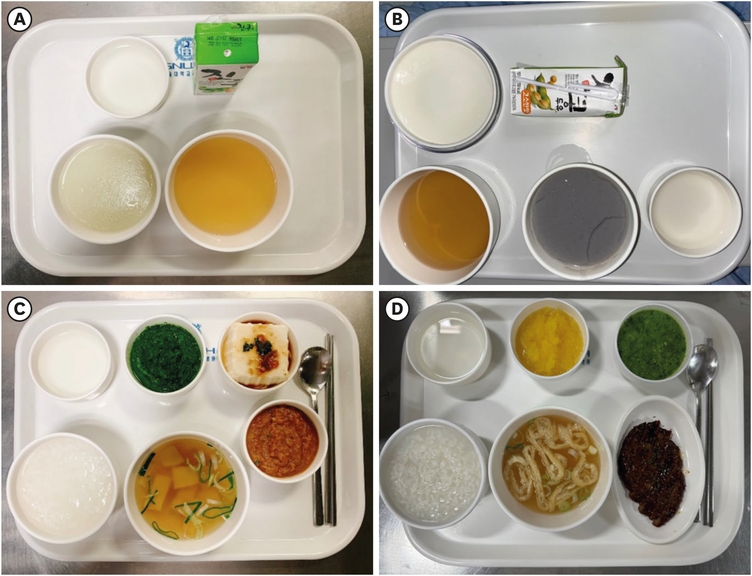
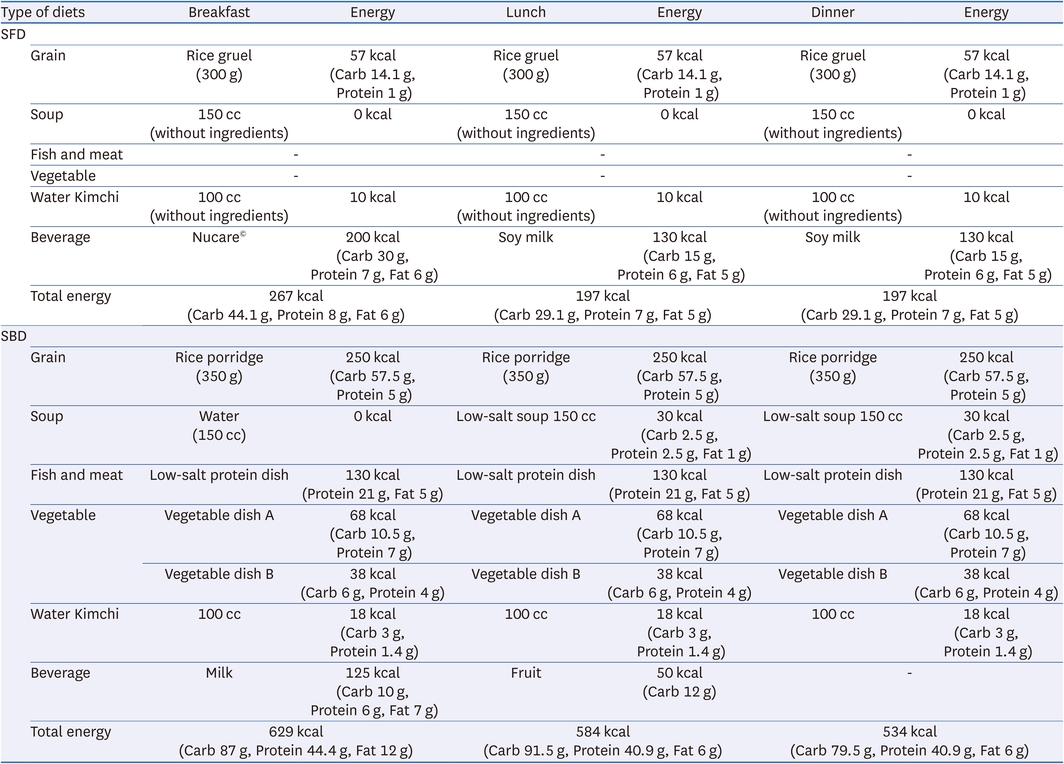
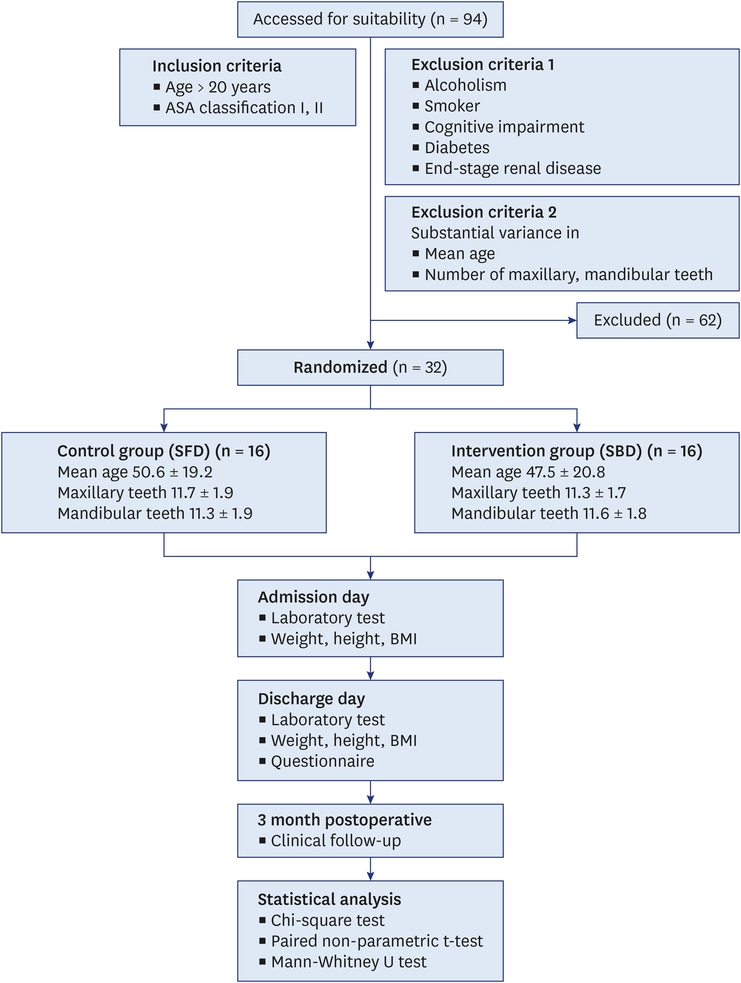
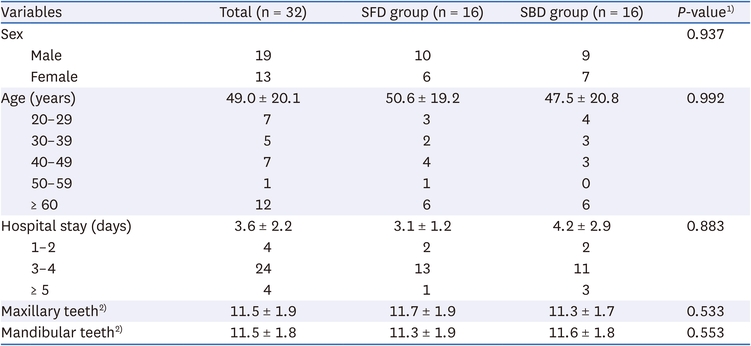
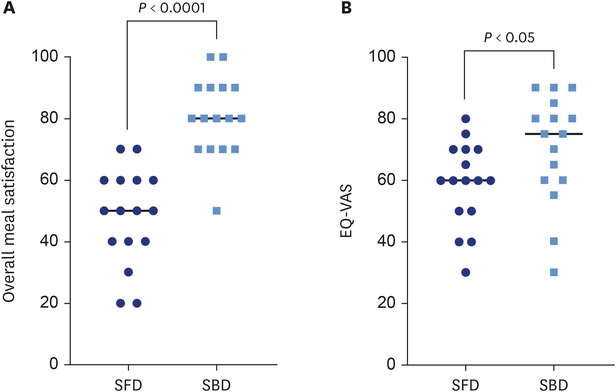
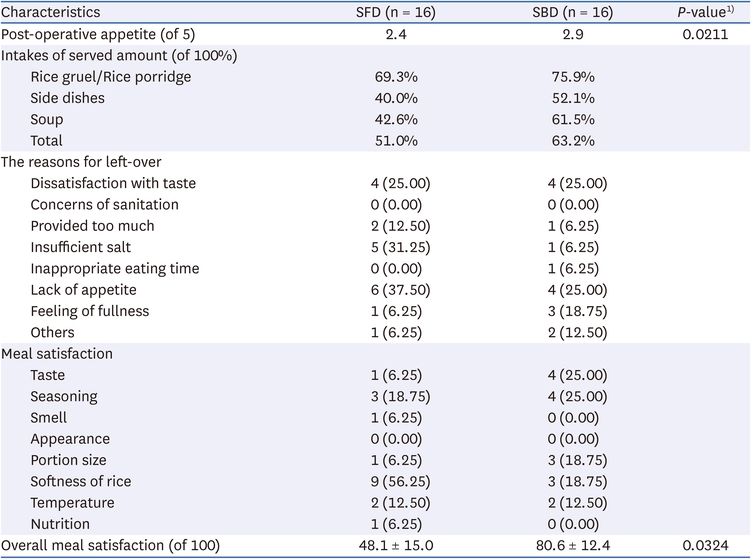





 Cite
Cite


